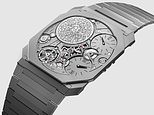Has Nessie finally been FOUND? Seasoned Loch Ness skipper shares images of monster-like shape caught on sonar
It's the mythical creature that has captured the attention of people around the world for decades.
And now the search for the Loch Ness monster has been taken up a gear.
Shaun Sloggie, a seasoned Loch Ness skipper, was cruising across the loch when he spotted a mysterious shape on sonar.
While its source remains unclear, Sloggie, 30, admits he's 'never seen anything like it'.
'The strangeness of it was chilling – it's the sort of thing that leaves you speechless,' he said.

Shaun Sloggie, a seasoned Loch Ness skipper, was cruising across the Loch when he spotted a mysterious shape on sonar

The sonar indicated that a large, object was lurking at a depth of around 98-metres, described by the stunned skipper as 'the biggest thing I've ever seen'
Slogg and maritime pilot Liam McKenzie, 29, were doing their usual rounds at Cruise Loch Ness when they stumbled upon the strange shape.
On September 22, 2024, while preparing for another vessel's arrival, Sloggie's sonar flashed up.
The sonar indicated that a large object was lurking at a depth of around 98-metres.
He described it as 'the biggest thing I've ever seen.'
With its elongated shape and distinct features hinting at air pockets, the team couldn't help but wonder if the sonar reading was tied to the infamous Loch Ness Monster.

It's the mythical creature that has captured the attention of people around the world for decades. And now the search for the Loch Ness monster has been taken up a gear (artist's impression)

Despite returning to the scene to investigate, the mysterious contact had vanished, leaving the team baffled
'We've seen all sorts of fish that shouldn't be here, but this? This was different,' Sloggie said.
Despite returning to the scene to investigate, the mysterious contact had vanished, leaving the team baffled.
Sloggie admitted: 'We're not sonar experts, but I've never seen anything like it.'
Spookily, the last major sonar contact in Loch Ness occurred almost exactly four years ago, on September 24, 2020.
The news comes shortly after a photographer revealed 'compelling' photographs of what she suggests is the mythical Loch Ness Monster, after keeping them a secret for five years.

With its elongated shape and distinct features hinting at air pockets, the team couldn't help but wonder if the sonar reading was tied to the infamous Loch Ness Monster
Chie Kelly, 52, took the pictures of the creature from Scottish folklore half a decade ago but did not share them out of fear of public ridicule.
The first 15 images were revealed last year and now The Cryptid Factor podcast has released and analysed all 71 frames. It hoped that the photographs taken by Ms Kelly, who works as a translator, would spark debate in investigators around the world.
The images have been put into a video and appear to show something moving across the loch in the Highlands.
Despite many images of the so-called monster - including a famous photograph taken in 1934 by Colonel Robert Kenneth Wilson - proven to be fakes, it has not stopped tourists flocking to the area each year in hope of seeing the mythical beast.




































































































































